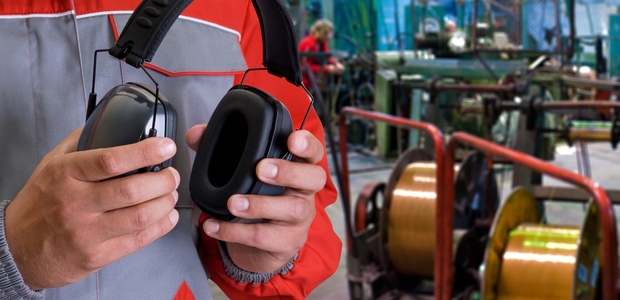
NIOSH, OSHA Release Guidance on Ototoxicity
Some ototoxic chemicals may exacerbate noise-induced hearing loss even though the noise level is below OSHA’s PEL, the document warns.
- By Jerry Laws
- May 01, 2018
A document posted by NIOSH on March 15, 2018, and credited both to NIOSH and OSHA offers guidance for preventing hearing loss that is caused by ototoxic chemicals and noise exposure.
DHHS (NIOSH) Publication Number 2018-124, a Safety and Health Information Bulletin, lists five examples of substance classes of ototoxic chemicals:
- pharmaceuticals
- solvents
- asphyxiants
- nitriles
- metals and compounds
Mercury compounds and lead are among the chemicals listed in the metals and compounds class. The asphyxiants listed include carbon monoxide, tobacco smoke, and hydrogen cyanide and its salts.
"There is growing concern among occupational health and safety professionals that ototoxicant-induced hearing loss may go unrecognized since the measure for hearing loss does not indicate the cause," the five-page document states. "For example, audiometric tests are powerful tools that show hearing impairments (i.e., threshold shifts); however, they do not differentiate between noise and ototoxic causes."
It points out that harmful exposure to ototoxicant chemicals can occur through inhalation, ingestion, or skin absorption. Workers’ risk of hearing loss is increased when they’re exposed to the chemicals while working around elevated noise levels, it says, adding that the hearing loss may be temporary or permanent, depending on the level of noise, the dose of the chemical, and the duration of exposure, and such impairment affects many industries and occupations, from machinists to firefighters.
"Several studies have suggested that some ototoxic chemicals, such as certain solvents, might exacerbate noise-induced hearing loss even though the noise level is below OSHA's Permissible Exposure Limit (PEL)," it says.
The document relies on and cites a 2009 literature review from the European Agency for Safety and Health at Work, “Combined Exposure to Noise and Ototoxic Substances.” This 62-page resource contains a table of chemical agents, described as major sources of exposure, and their major uses by industry; the chemicals include toluene, styrene, trichloroethylene, n-Hexane, mercury, manganese, arsenic, and cadmium.
Industries More Likely to Have Ototoxicants
Industries that use potential ototoxicants include manufacturing, mining, utilities, construction, and agriculture. Manufacturing industry subsectors in which they are used, according to the guidance document, may include:
- Fabricated metal
- Machinery
- Leather and allied products
- Textile and apparel
- Petroleum
- Paper
- Chemicals (including paints)
- Furniture and related products
- Transportation equipment (e.g., ship and boat building)
- Electrical equipment, appliance and component (e.g., batteries)
- Solar cells
It says work activities that often have high noise exposure and could add synergistic effects—defined in this document as a "greater-than-additive" effect—when combined with ototoxicant exposure may include:
- Printing
- Painting
- Construction
- Manufacturing
- Firefighting
- Firing weapons
- Pesticide spraying
Preventing Harm
The guidance document recommends reviewing the Safety Data Sheets to identify ototoxic substances or chemicals—specifically Section 11 of an SDS that addresses toxicological information. The OSHA Hazard Communication Standard requires employers to provide training to workers who are exposed to hazardous materials, including ototoxic chemicals.
The next steps recommended in the document follow the familiar hierarchy of controls, beginning with elimination or substitution before moving on to administrative controls (such as eliminating unnecessary tasks that cause noise or ototoxicant exposure or operating noisy equipment when employees aren't near it) and PPE (such as respiratory protection, chemical-protective gloves, sleeves, aprons, and hearing protection).
This article originally appeared in the May 2018 issue of Occupational Health & Safety.